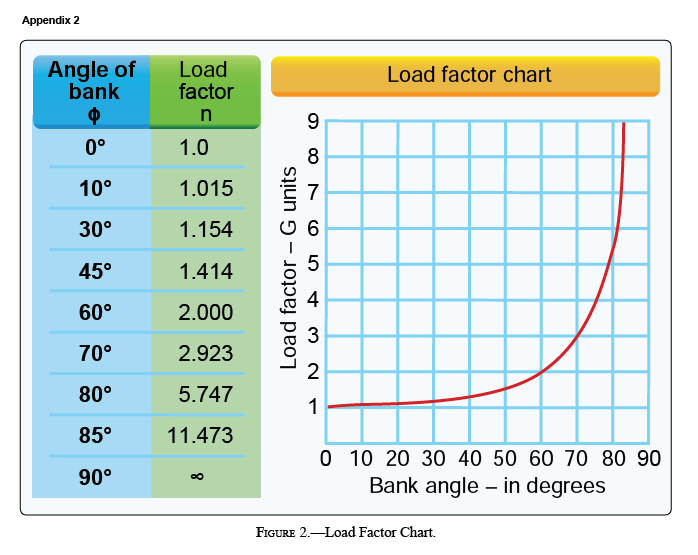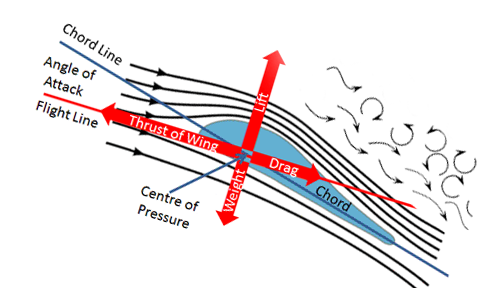Small Unmanned Aircraft Loading
Weight – Stability – Center of Gravity
The FAA wants remote pilots to understand how your small unmanned aircraft’s performance is affected by the four aerodynamic forces of flight called thrust, drag, weight and lift or also known as, power, friction, gravity and lift, respectively. Understanding how these forces work, and knowing how to control them with the use of power and flight controls, are essential to flight. AS we learned way back in Lesson 1, it is the remote pilot’s responsible to ensure that every flight can be accomplished safely, does not pose an undue hazard, and does not increase the likelihood of a loss of control of the aircraft. The remote pilot is to ensure that any object attached to or carried by the sUAS is secure and does not adversely affect the flight characteristics or controllability of the aircraft, including any payloads or cameras that may affect the UA’s weight and/or center of gravity (CG).
Balance, Stability, and Center of Gravity
The center of gravity (CG) is the point at which your aircraft is perfectly balanced. The precise location of the center of gravity is basically a theoretical location, as where its location on an aircraft depends on the distribution of overall weight on the aircraft. With multi-rotor aircraft like an sUAS, its imperative to ensure any and all weight is correctly distributed or attached, according to the manufacturer’s recommendations. An unmanned aircraft that is loaded out of balance may exhibit unexpected and unsafe flight characteristics.
The remote pilot must consider the consequences of an overweight aircraft if an emergency condition arises. Although a maximum gross takeoff weight may be specified, the aircraft may not always safely take off with this load under all conditions. Conditions that affect takeoff and climb performance, such as high elevations, high air temperatures, and high humidity (high density altitudes) may require a reduction in weight before flight is attempted. Other factors to consider prior to takeoff are runway/launch area length (if flying a fixed-wing sUAS), surface, slope, surface wind, and the presence of obstacles.
Weight changes during flight also have a direct effect on aircraft performance, with excessive fuel burn being the most common weight change that takes place during flight. As fuel is used, the aircraft becomes lighter and performance is improved, but this could have a negative effect on balance. In FAA permits loads to be jettisoned provided it can be performed without injury or damage to ground crew, civilians, or property.
To ensure that the unmanned aircraft’s center of gravity limits are not exceeded, the remote PIC should follow the aircraft’s loading instructions specified in the owner’s manual. If one is not provided, follow the instructions as outlined in your operating handbook and follow the guidance as set forth in the FAA Weight & Balance Handbook.
https://www.faa.gov/sites/faa.gov/files/2023-09/Weight_Balance_Handbook.pdf
The Four Forces of Flight: Thrust – Drag – Weight – Lift
Understanding how these forces work and knowing how to control them with the use of power and flight controls are essential to flight and especially crucial to sUAS because of their small size… even the smallest changes can greatly affects its CG. If the center of gravity is too far aft (to the rear) of your aircraft, the aircraft becomes more difficult to control which also means, more difficult to recover from a stall.
THRUST (power): the forward force or thrust produced by the propeller and engine, which opposes or overcomes the force of drag.
DRAG (friction): a rearward retarding force or friction caused by disruption of airflow by the wing, rotor, fuselage, and other protruding objects.
WEIGHT (gravity): the combined load of the aircraft itself and everything attached, pulling the aircraft downward because of the force of gravity. Weight/gravity opposes lift and acts vertically downward through the aircraft’s center of gravity (CG).
LIFT: opposes the downward force of weight and is produced by the dynamic effect of the differences in air pressures.
Remember: When your sUAS is flying in a straight-and-level unaccelerated flight, lift equals weight and thrust equals drag.
Although the majority of sUAS operators will be using multirotor quadcopters with a fixed static camera payload and/or a static CG, the FAA still wants remote pilots to fully understand how changes in the CG can affect flight performance, and the FAA may often refer to “fixed wing aircraft” in parts of the Knowledge Exam.

Excessive weight reduces the flight performance in almost every respect, including a shorter endurance which can compromise the structural integrity of an unmanned aircraft. At slower air speeds, the maximum available lifting force is only slightly greater than the amount necessary to support the weight of the sUAS. However, at higher speeds, the capacity of the flight controls, or a strong gust in wind, may increase the load factor beyond all safe limits. It’s important to remember that the load factor on the wings of an aircraft may be increased any time the aircraft is subjected to maneuvers other than straight and level flight.
When an unmanned aircraft is flying in a straight and level unaccelerated flight, lift equals weight and thrust equals drag. This does not mean the four forces are equal but rather, it means the opposing forces are equal to each other and thereby, cancel the effects of each other.
Adding weight or a payload to your aircraft can result in any of the following deficient characteristics:
- Higher takeoff speed
- Longer takeoff run
- Reduced rate and angle of climb
- Lower maximum altitude
- Shorter range
- Reduced cruising speed
- Reduced maneuverability
- Higher stalling speed
- Higher approach and landing speed
- Longer landing roll
Stability in an aircraft affects two areas significantly:
Maneuverability – the quality of an aircraft that permits it to be maneuvered easily and to withstand the stresses imposed by maneuvers. It is governed by the aircraft’s weight, inertia, size, structural strength, and power source.
Controllability – the capability of an aircraft to respond to the pilot’s control, especially with regard to flight path and attitude. It is the quality of the aircraft’s response to the pilot’s control application when maneuvering the aircraft, regardless of its stability characteristics.
Taking off on an uphill slope with a fixed-wing aircraft will require an increased distance to obtain lift.
Load Factors
An unmanned aircraft’s performance can be decreased due to an increase in load factor when the aircraft is operated in maneuvers other than straight and level flight. Load increases at a significant rate after a bank has reached 45° or 50°, as the wing must produce lift equal to these load factors if altitude is to be maintained. The Load Factor Chart is used to determine load factors in a given radius banked turn. For example, if an sUAS weighs 15 lbs and the bank angle in degrees is 45º, you would use the following formula using the Load Factor Chart:
15 x 1.414 = 21.21 or 22 lbs
So if your 15 lb sUAS was making a 45º turn, it would need to support a weight equal to at least 22 lbs.
Another example with a 25 lb sUAS at a 60º banking:
25 x 2.00 = 50 lbs. Your 25 lb sUAS would need to sustain a weight of 50 lbs in a 60 degree banked turn.

Stalls and Critical Angle of Attack (COA)
Any aircraft, within the limits of its structure, may be stalled at any airspeed regardless of its gross weight. When a sufficiently high Angle of Attack (AOA) is imposed upon the aircraft, the smooth flow of air over an airfoil (wing) breaks up and separates, producing an abrupt sudden loss of lift, which results in a stall.
So the angle of attack (AOA) is defined as the angle at which the chord of the wing meets the relative wind. The chord is a straight line from the leading edge (front) to the trailing edge of a wing and at low angles of attack, the airflow over the top of the wing flows smoothly and produces lift with a relatively small amount of drag. But as the AOA increases, lift and drag increase however the flow of air separates from the upper surface of the wing, and backfills (or turbulence) thereby reducing lift and increasing drag. This again results in a stall, which can lead to loss of control if the AOA is not reduced.
It’s important for the pilot to understand that a stall is the result of exceeding the critical angle of attack (AOA) and not from insufficient airspeed.

Congratulations! You’ve completed Lesson 8 on sUAS Loading and Center of Gravity. Be sure to click the COMPLETE button below to register your progress.
1. The four forces acting on an aircraft in flight are:
2. To ensure an sUAS’s center of gravity (CG) limits are not exceeded, follow the aircraft loading instructions specified in the:
3. What could be a consequence of operating an sUAS above its maximum allowable weight?
4. When are the four forces that act on an airplane in equilibrium?
5. What is the relationship of lift, drag, thrust, and weight when the aircraft is in straight-and-level flight?
6. A stall occurs when the smooth airflow over the unmanned aircraft’s wing is disrupted, and the lift degenerates rapidly. This is caused when the wing:
7. The angle of attack at which an airplane wing stalls will:
8. When loading cameras or other equipment on an sUAS, mount the items in a manner that:
9. If an unmanned airplane weighs 33 pounds, what approximate weight would the airplane structure be required to support during a 30° banked turn while maintaining altitude?
10. At what bank angle does the load factor of your aircraft begin to change significantly?
11. The most critical conditions of launch performance are the result of some combination of high gross weight, altitude, temperature, and:
12. When operating an aircraft, the remote pilot is responsible for using:

